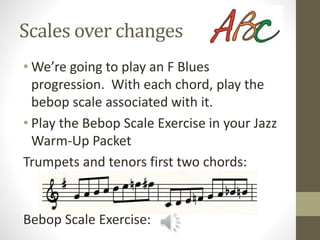The document provides instruction on learning jazz improvisation through an F blues scale. It covers major, mixolydian, and bebop scales in F, Bb, and C. It teaches the I7, IV7, and V7 chords and the 12 bar blues progression. Students practice call and response, trading solos, and soloing over blues changes to develop improvisation skills. Homework assigns solo practice over blues changes.

































